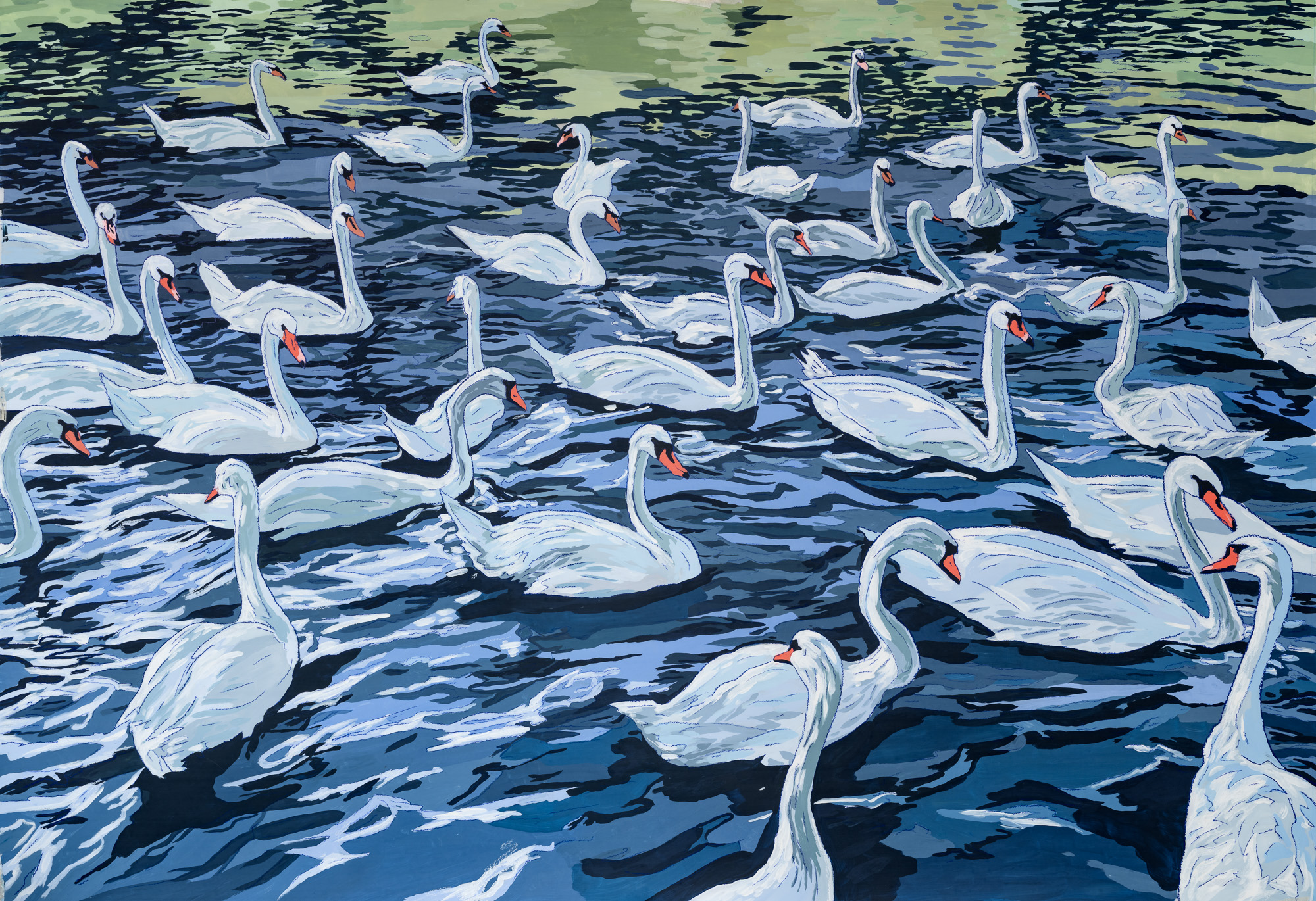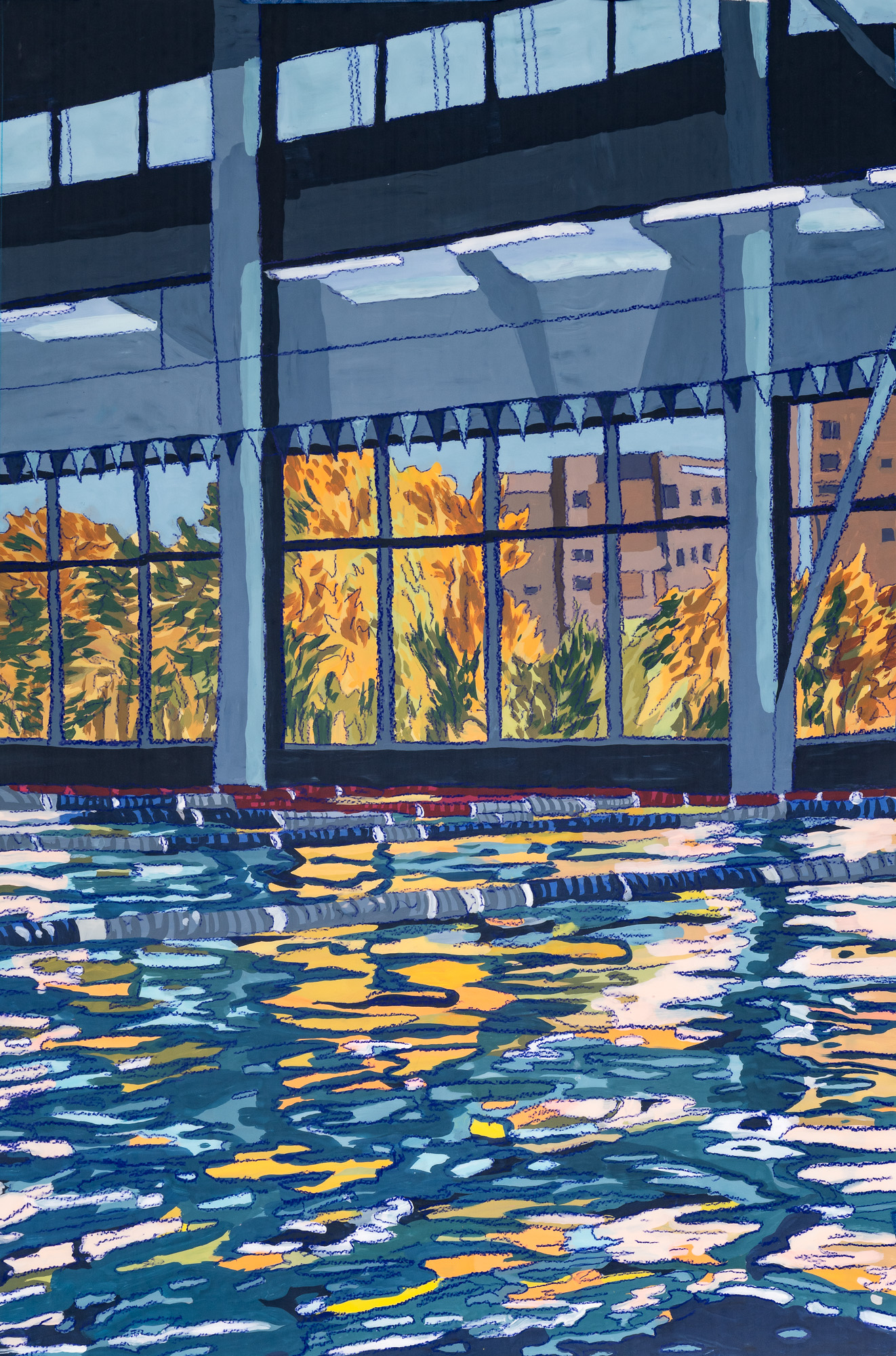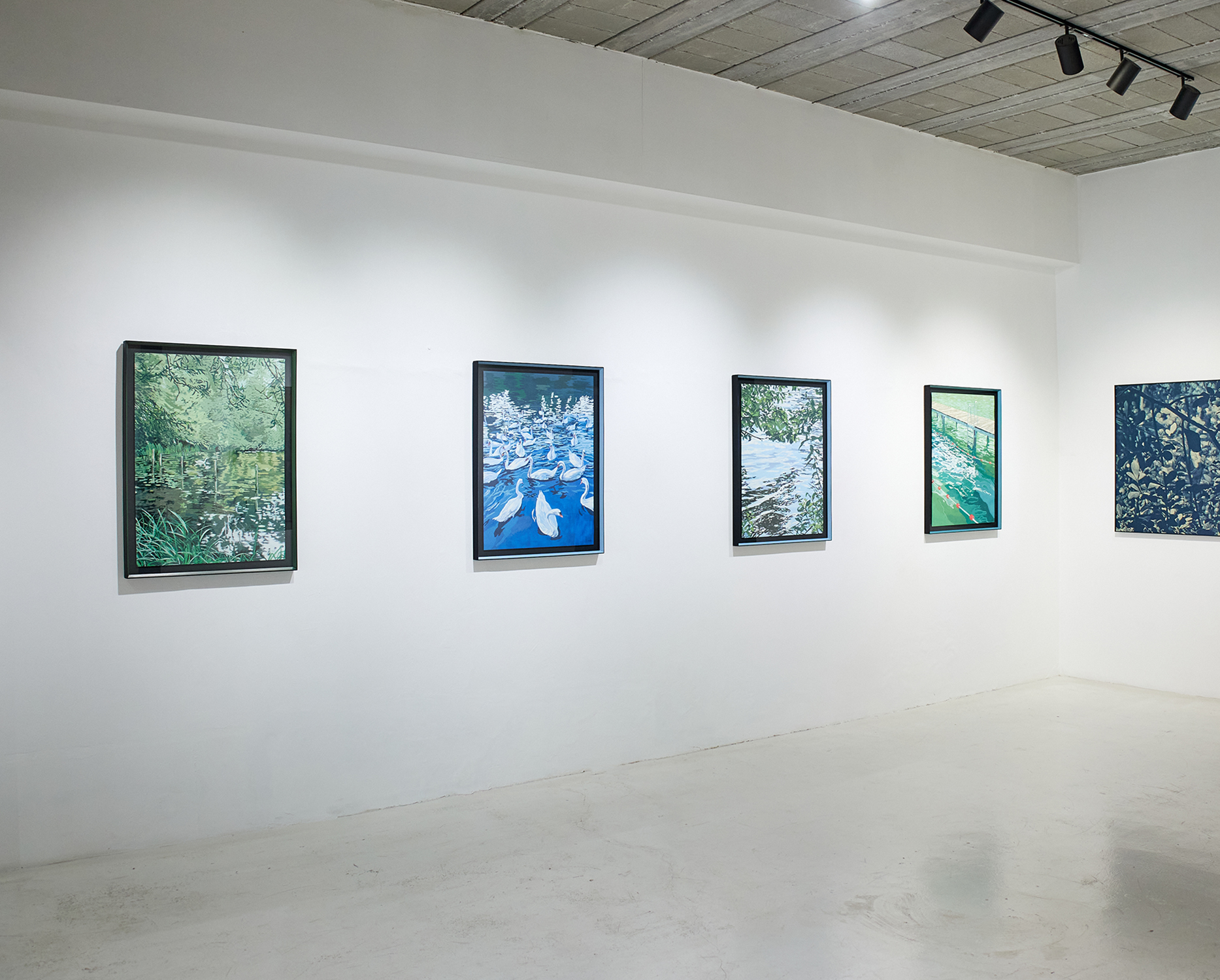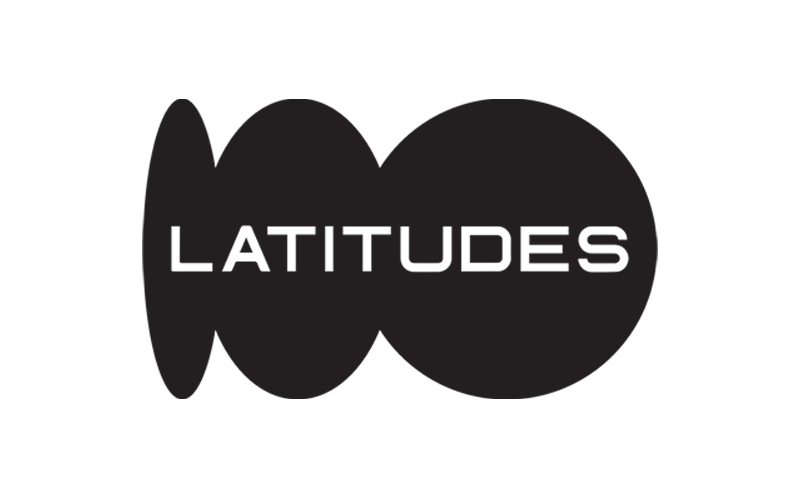Prism: an impactful series by Adele van Heerden
 Adele van Heerden, Fleet, 2025, Pastel & Gouache on Film, 84x118cm, R54,800.00 ex. VAT, CONTACT TO BUY
Adele van Heerden, Fleet, 2025, Pastel & Gouache on Film, 84x118cm, R54,800.00 ex. VAT, CONTACT TO BUY
Prism is a series of nine new works from multidisciplinary artist Adele Van Heerden, informed by a restorative residency in Biesenthal, Germany. During the artist’s stay, Van Heerden was also in the process of recovering from an injury all while freshly anchored to the calm of the program, the company of her fellow residents, and the town’s lush landscape. The opportunity to slow her process arose from the need to limit her physicality during this time. Van Heerden committed herself to the ritual of observation, reflection and limnological fascination with Lake Wukensee.
The series title draws attention to the simple magic of refracting light, stretched and inhabitable amongst the cool waters. Staying in a sense of stasis, there, the artist’s ongoing study into the relationship between a body and a body of water, finds encouragement in this profound reconnection with nature. The steady repetition of the artist’s routine of walking, photographing, drawing, recording, observing, swimming and most importantly appreciating the lives all tethered to the same lake define this project. Van Heerden’s works with titles such as Here, Now, 2025, reinforce the artist’s desire to relay the transformative qualities of subsuming oneself in the present. From total attention to complete abandon and back again, the artist volleys safely across the steps of her usual process in the cocoon-like refuge surrounding her during her three-month stay.
“It’s my intention to live my life in a way in which I am always observant, to see the beautiful and extraordinary hidden in the mundane and everyday. I then incorporate these investigations into my work, to share these views with others,” the artist explains, illuminating the underscore of her vision. A prism is defined as “a geometric shape, an optical element, and a way of thinking about something.” The relationship between light, water and colour —an ongoing fascination for Van Heerden— finds focus in her latest connection with another ‘container’ of water as she studies its interplay with the surrounding, natural light. Each aspect of the series title’s definition offers insight into the project’s undertaking, like an arrangement of elements for a ceremonial rite. The shape of Lake Wukensee, its sensorial scenery, and each quiet opportunity to go even slower. One cannot achieve this task without relying on the relationship between these elements: to allow the colour to surface for the human eye, a prism is needed, in the same way an insistence on observation is needed to bear witness to this phenomenon. “During my time there, I focused on a multi-layered approach; engaging in historical research about Lake Wukensee, with archival material and personal stories provided by the local town archivist, Frau Gertrude Poppe. I embarked on my first cyanotype experiments, which are based on the archive documentation, as well as pocketbook drawings and film photographs of the environment,” Van Heerden details.

Adele van Heerden, Prism, Pastel and Gouache on Film, 42x59cm, 2025
This latest collection comprises moments memorialised in pastel and gouache on film, across varying dimensions of scale and with fresh approaches to the hues in the artist’s signature palette. Van Heerden usually prefers to infer the presence of swimmers and herself in her works, leaving the implication of any human presence in the details of the designs rippling across the water’s surfaces. In Prism, the town’s swans are the subjects of two of Van Heerden’s artworks, the artist recalling swimming in proximity to the lake’s natives with great surprise and joy.
“Water takes the shape of whatever container it is in. We are always observing water in terms of its containment: lakes, pools, in a glass, a river or an ocean. I am interested in water as a thing containing multitudes of identity. Water is unknowable, it has been something before, and will be something else again, therefore it can never become familiar. When we look at water we see light reflection and transparency. Is there stillness or movement? I try to see water as a teacher, and meanings in my work are gleaned through engagement with these watery environments.”
 Adele van Heerden, installation shot, courtesy of the artist
Adele van Heerden, installation shot, courtesy of the artist
An interview with the artist
Latitudes Online: How did your time in Biesenthal influence your creative process, especially while recovering from your injury?
Adele van Heerden: Arriving in Biesenthal, a small town in the forest, north of Berlin, I knew right away I needed a lot of rest and intentional slowing down. My time there became a psychological clearing, as I switched to a soft, fluid focus after an extended intensive work period. The slowing down process and the digital detox of the forest, at first hard to accept, eventually led me to start challenging my existing stories and narratives, many which were outdated. This lead me to find new meanings and deeper understandings of myself and my work. I tried to truly engage with my approach to my practice with patience. The other artists I was in residency with were a very supportive group and we all became close very quickly. We had a weekly formal presentation day where we would speak about our work, but I think the more casual daily exchanges - like making dinner together, or going to the lake, were also deeply meaningful for me.
Latitudes Online: You mentioned engaging in historical research about Lake Wukensee. Are there specific parts of this research that stood out to you, and how did they inform your work?
Adele van Heerden: In my work, there seems to be a recurring motif in which I am in dialogue with the past, present and possibly even the future of a specific location I am engaging with.
Most anthropogenic lakes in and around Berlin have been shaped by glaciers: meltwater flowing in tunnels underneath the ice, and forming the lakes as ice retreated. Ice also accounts for the sandy, clay and silt beds, as well as their overall shapes. The beach is where land and sea collides. In South Africa the coastline is rough and wild, while in Brandenburg, next to the lake, I found a silky coolness, discovering the birch and pine forest, moss, reeds and water lilies.
I usually like to read a lot about the history of a place when I visit. I went for tea with Frau Gertrude Poppe, the local town historian who had an amazing archive at her house of newspaper articles and pictures about the lake, the building of the strandbad, the restaurant there, the beach and the different eras since before the First and Second World Wars and Through the GDR era. Having grown up in Biesenthal, Frau Poppe also had some personal stories to tell about growing up at the lake.
Researching history and storytelling is an important part of the process to get an overall understanding of a place. My intention is to share and re-interpret these different points of view, in order to participate in this exchange and to share all the different stories and points of view about a place.
Latitudes Online: What role did routine play in your creative process, referring back to your mention of committing to observation and reflection?
Adele van Heerden: My time in residency revolved around a daily engagement with the lake, gentle swimming in the mornings and walking around the lake in the evenings, trying to be mindful and observant. Every time I walked at different times of day, in varying light and weather conditions, things felt and looked
very different.The lake became a filter through which I experienced things, observing light and atmospheric effects, and bearing witness to the subtle changes in the environment as spring became summer, and summer slowly became autumn.
An important part of this process was photography, video recordings, and pocketbook drawings. I wanted to show the lake from underwater, what I saw on my daily swims. This was the starting point of my video “Dissolving,” a six- minute video exploring below the surface over the course of two months. I also made some experimental cyanotypes informed by archival material and photographs uncovered during my research on the history of the area.
Latitudes Online: What do you hope viewers take away from Prism?
Adele van Heerden: I think as artists it's our purpose to hold up a mirror, to reflect who we are and what we see back to the world. I hope that through this process of signaling and exchange, others will see me - but also recognise and understand something in themselves.
Adele van Heerden, Poloroids, photos by Warren Talmarkes
Further Reading In Articles
African Artist Directory
























